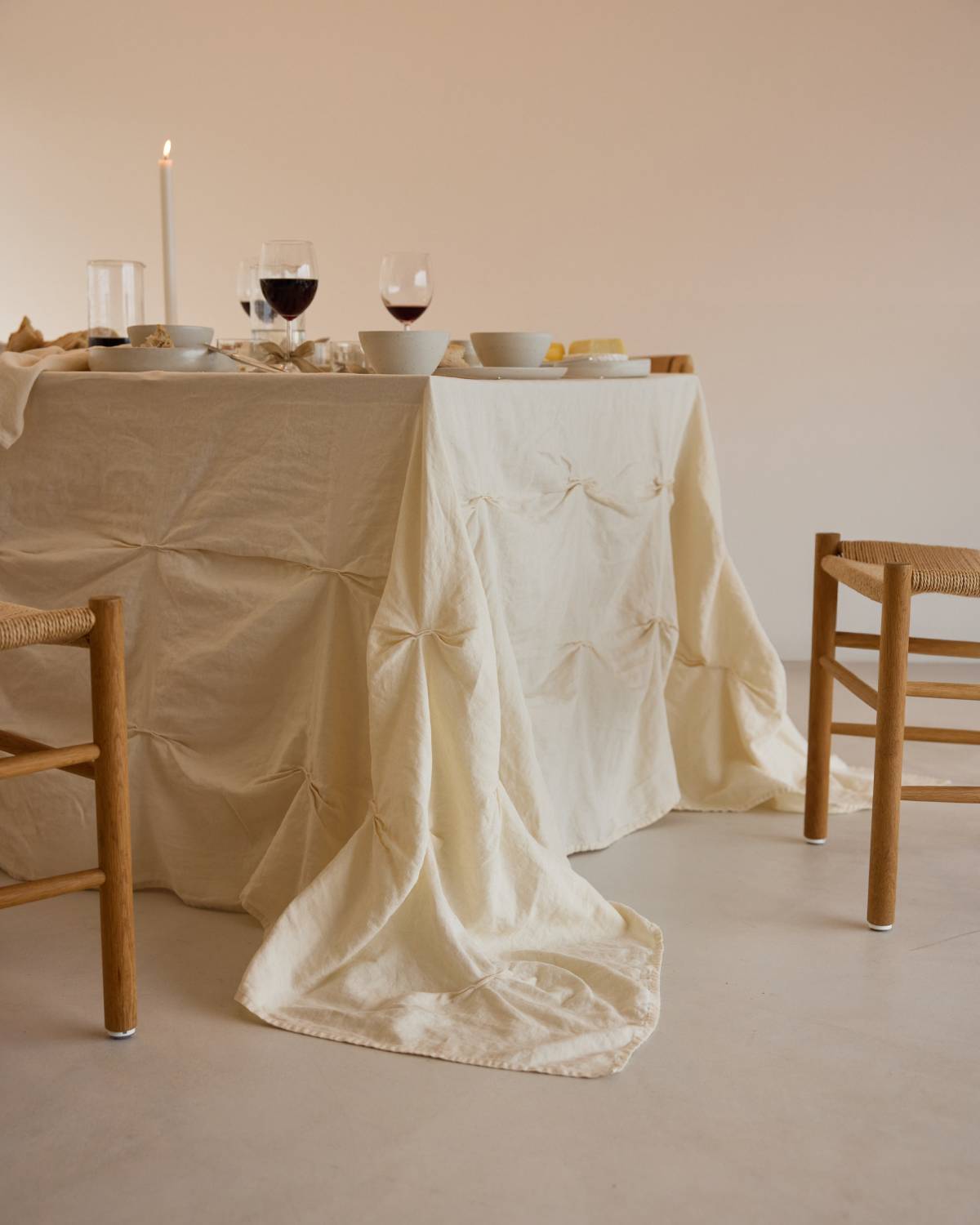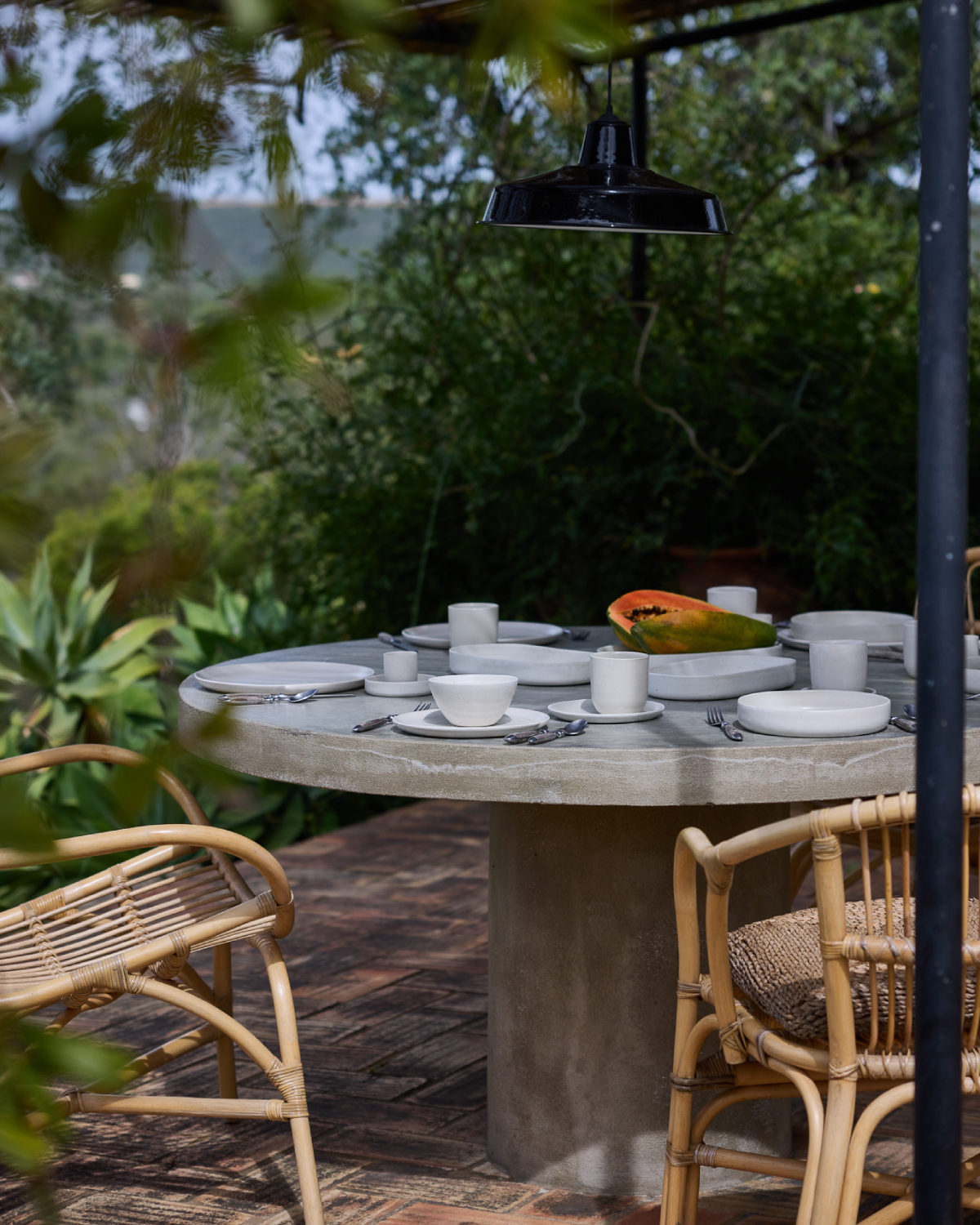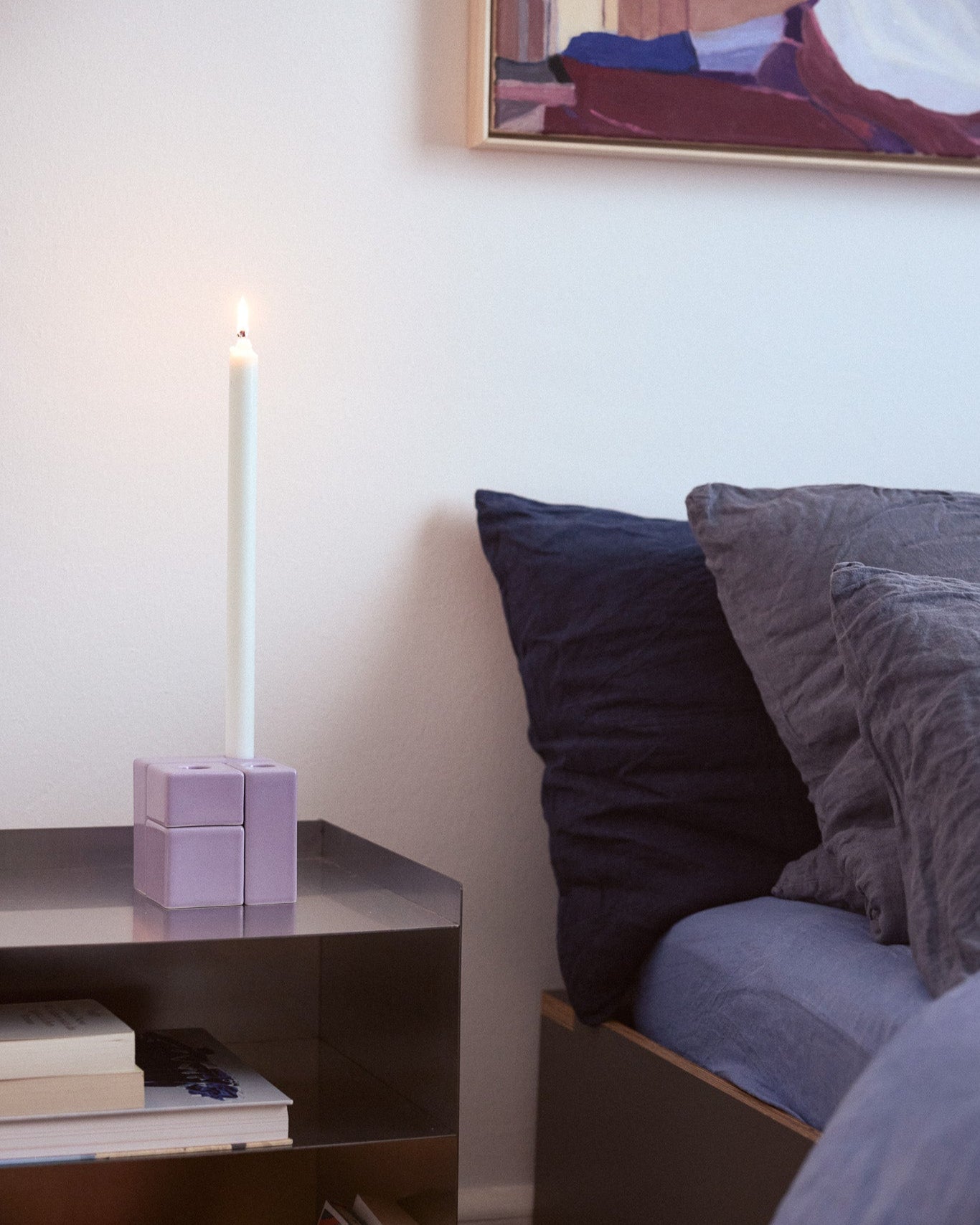OUR PRODUCTS

CLAY: A NATURAL MATERIAL
Our ceramics are crafted in manufactories in Portugal. The raw material is a pure natural product sourced from the surrounding region.
For our three tableware collections – Klassik, Aberta, and Traditionell – we use stoneware. For the Pura collection, we work with porcelain.
Stoneware is fired at a temperature of at least 1,180°C to achieve its characteristic density and durability. This makes our products water-resistant even without glazing.
As stoneware is a natural material and each extraction has a slightly different composition, the color of our unglazed, pure clay pieces may vary slightly – a natural feature that makes each one unique.

THE MANUFACTURING PROCESSES OF OUR CERAMICS
Our tableware collections and accessories are created using a variety of production techniques. To achieve the desired shape, the clay is either cast or pressed. Each piece is then finished by hand, giving it its unique character.
The production process of our handcrafted Klassik collection combines traditional and modern techniques: The distinctive shapes are manually formed using a mold, then cleaned, refined, and glazed by hand after drying – before being fired in the kiln.
The pieces in the Aberta collection are hand-painted.

OUR GLAZES
We develop our glazes in collaboration with our manufacturers to create typical shades that fit perfectly into our onomao color scheme.
There are several ways to apply the glazes. The ceramic is either dunked or dipped, painted, or sprayed. In all variations, the colors are applied by hand.
The glaze fuses with the ceramic through the firing process and gives it a resistant surface.
We have our glazes regularly tested by TÜV or other independent institutes. This way, we can exclude that they contain harmful substances to health or the environment.

GLASSES
Our drinking glasses and carafes are made from 80% recycled glass and mouth-blown in a family-run manufactory in Portugal. Since glass is made from natural materials such as sand and lime, it is ideally suited for recycling.
The melting and reshaping of glass is one of the oldest recycling processes in our cultural history. Delicate bubbles adorn the simple design. To create the bubble effect, the glassblowers sprinkle a little sodium onto the molten glass before shaping it. As a result, each piece is unique, with varying levels of bubble intensity.





